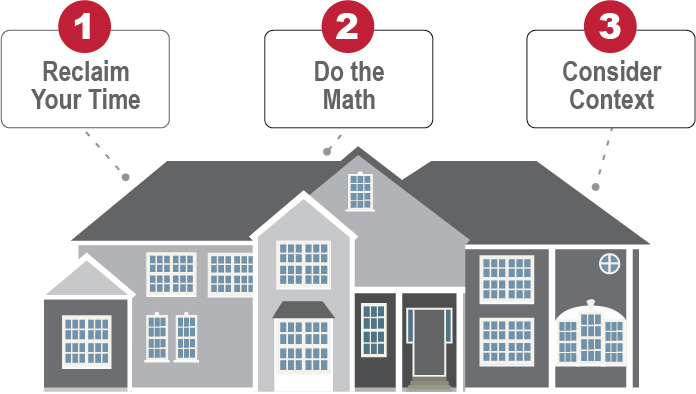What is your organization’s approach to assessing philanthropic capacity of your prospect pool? Do you use a formula provided by your wealth screening vendors or another industry-standard formula? Perhaps your organization assesses capacity based on demonstrated philanthropic giving to your institution or other nonprofits. As cost of living climbs in some U.S. cities to unprecedented levels, some of the most sophisticated prospect development teams are adjusting their standard formula related to real estate to account for these more expensive markets. BWF’s Director of Prospect Research Services, Roslyn Clarke, recently conducted a Facebook Live webinar in which she walked BWF’s clients through the intricacies of this approach. You can find the slides from the webinar here.
When doing a comprehensive research profile, real estate is just one of the factors considered when estimating philanthropic capacity. Wealth points like income, stock, and philanthropy are often relied on when available, as they are great indicators of the amount of liquid assets or discretionary income a prospect may have. However, prospect research professionals often end up assessing capacity based on real estate, since it is the easiest to identify; but, especially in high-value markets, there is a risk of over-estimating philanthropic capacity based on real estate values. We’ve put together three ideas on the best way to approach assessing philanthropic capacity based on real estate.
Assessing Philanthropic Capacity Based on Real Estate

Reclaim Your Time.
In some cases, confirming real estate details can be very time consuming. Spend some time upfront familiarizing yourself with the best tools and resources for the relevant markets. For example, New York City’s Automated City Register Information System (ACRIS) is great but not very easy to navigate. (Also, your pool may not have a significant number of prospects in NYC. Maybe it would be better to focus your time on the particulars of Houston where you have a lot of prospects in the oil and gas industry.) Then decide in advance how much time you want to spend on the average prospect and research deliverable. BWF has found that deliverables based on real estate should only take 15 minutes to 1 hour each.
Do the Math.
When doing a quick verification or preliminary rating, using a different multiplier for some markets can distinguish the lifelong librarian from the up-and-coming banker. Our clients have found that a 3-tiered system works well for verifications and/or prospect assignments.
- Tier 1 would include large cities where you have a significant number of prospects, like San Francisco or New York City, with the highest multiplier. In these markets the median home values are $1.5 million and $2 million respectively.
- Tier 2 could include cities where a million-dollar home is somewhat common, like Seattle.
- Tier 3 could be everywhere else, including large cities with a relatively low cost of living, like Cleveland.
You can buy great data, but the IRS, the U.S. Census Bureau, and others provide free statistics to help set up your tiers. (See https://factfinder.census.gov or www.census.gov Wealth, Asset Ownership, & Debut of Households Detailed Tables or Knight Frank 2017 Global Wealth Report.)
Relating this back to the first point, Reclaim Your Time: Before you dig in too deep, focus on the markets and demographics most relevant to your institution, compare notes with other shops, or outsource verification legwork.
Consider Context.
Additional information will paint a better picture. In addition to the purchase price, when did they buy the home? (Was it three years ago or 30? Was it in 2007 or 2009?) How much are the taxes and other fees? Did the home appear in a design magazine? Have they hosted fundraising events at their home? Did they buy their primary residence before selling their last one? Consider some yes or no flags like board service, having a family foundation, or gifts of stock. These can help you further segment or prioritize prospects in a particular pool. They can also serve as a baseline qualification for capacity. (Relating back to the first point, Reclaim Your Time: If the prospect has served on the campaign committee of another institution’s board, it is highly likely that he or she has made a major or principal-level gift there and would qualify as a major gift prospect for your organization.)
Following these three steps can help your organization create a more streamlined research process and allow frontline fundraisers and prospect development professionals to meaningfully interact in conversations about prospect strategy, prioritizing discovery prospects, and even solicitation timing based on life stage or other liquidity indicators.
To learn how BWF can help you create customized capacity ratings, provide outsourced research verifications, and aid your fundraising department in interpreting complex wealth details, contact Roslyn Clarke.




